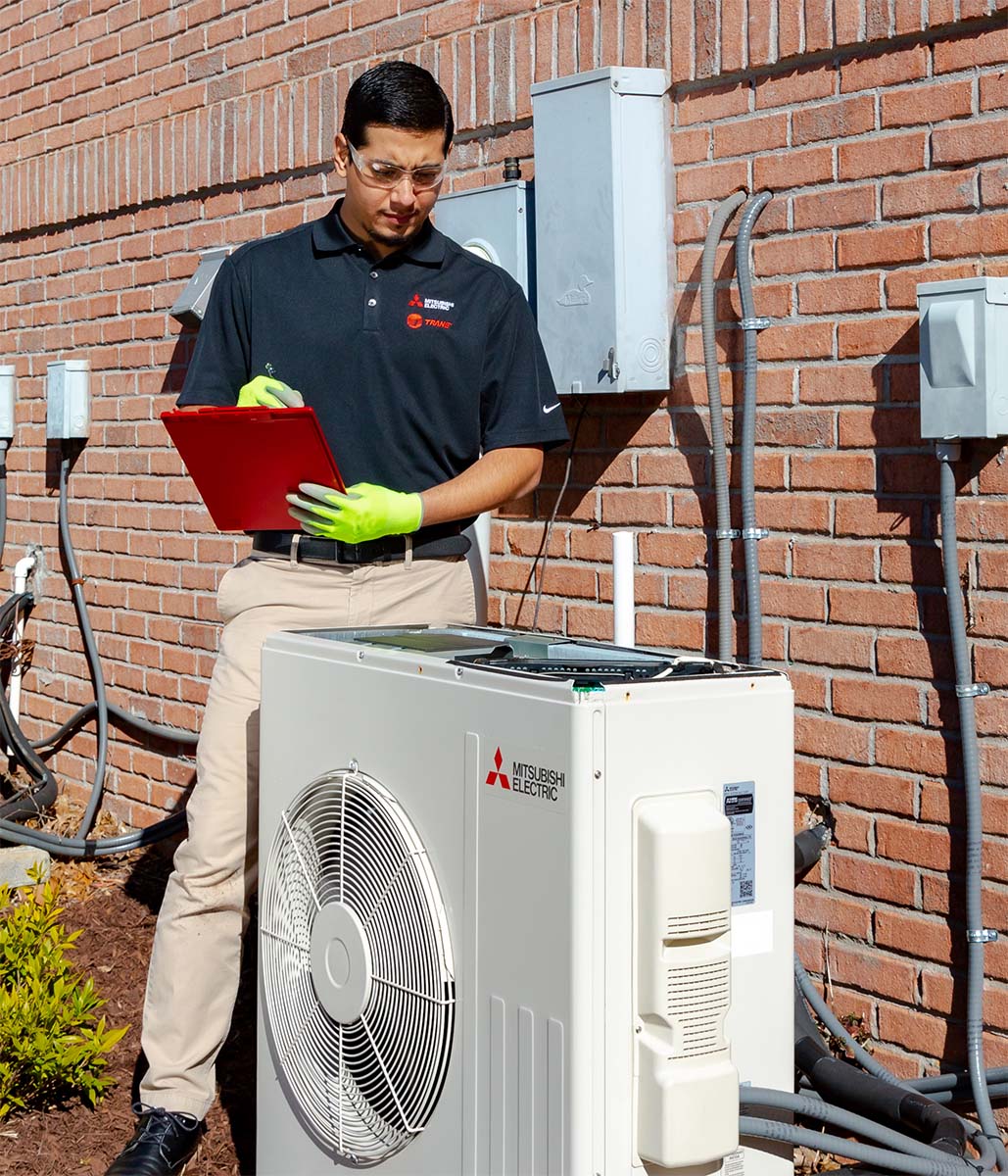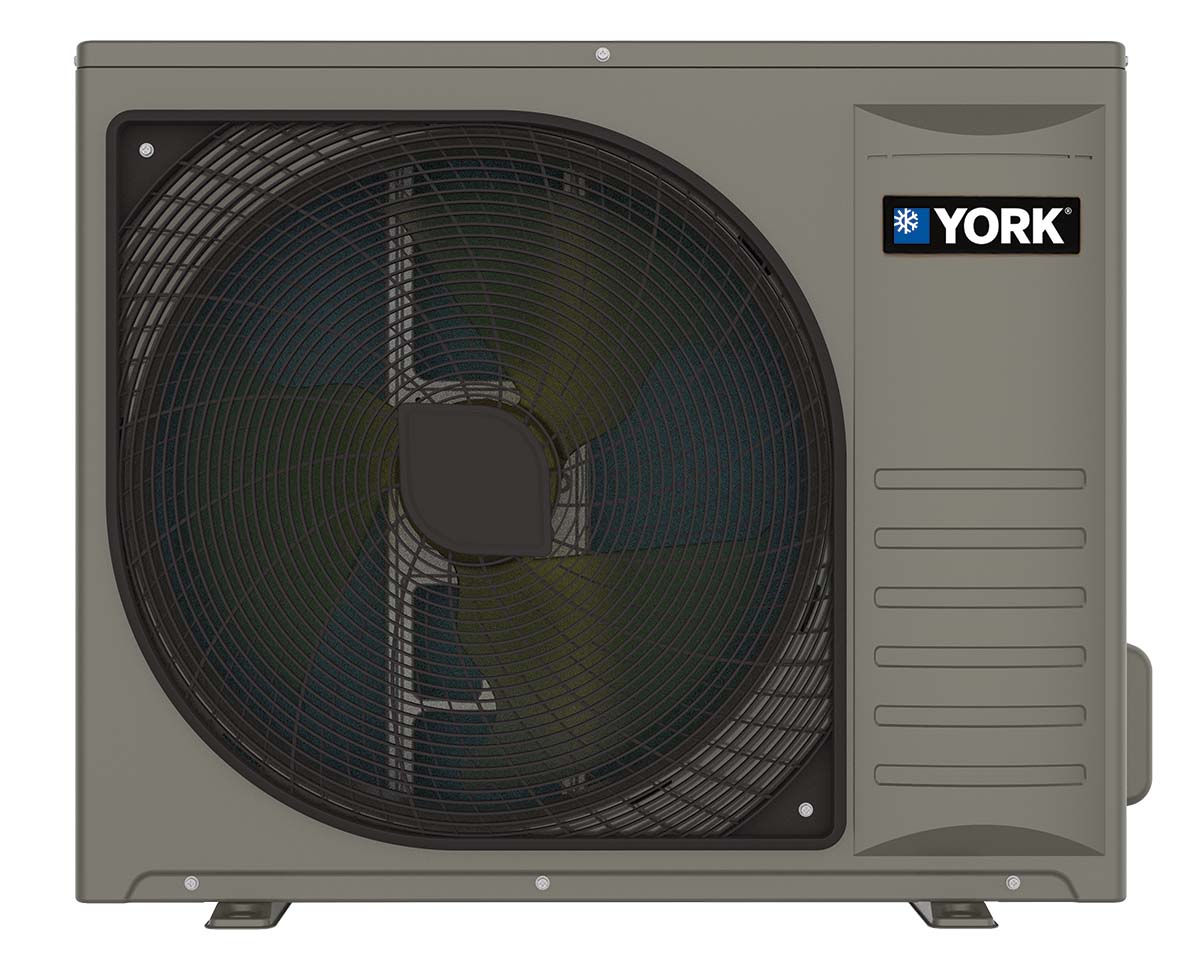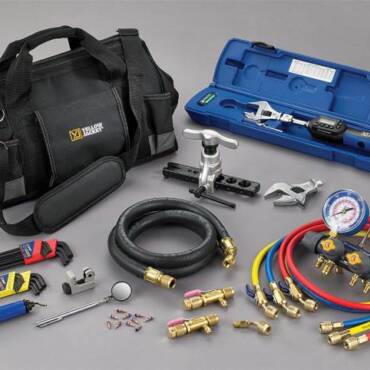✕
Traditionally, heat pumps have struggled to penetrate the market in regions with frigid seasonal temperatures. They gained a reputation for subpar performance during the winter and quietly fell out of favor with homeowners.
But now that technology has drastically improved, can they regain a foothold in the market, especially with the bevy of incentives and credits that are ripe for the taking?
The State of Maine saw a heat pump renaissance when it introduced state-level incentives for homeowners to jump on the electrification wagon, so what would happen in a state like New York once it has the full backing of Inflation Reduction Act (IRA) dollars?
In April, the state of New York was awarded $158 million in initial funding for residential energy-efficiency rebates included in the federal Inflation Reduction Act (IRA), becoming the first state to have its funding application approved by the U.S. Department of Energy (DOE).
The money, through the IRA’s Home Electrification and Appliance Rebates program, is for direct-to-consumer rebates for the purchase of qualifying high-efficiency HVAC equipment, including up to $8,000 for a heat pump.
The result? A lot of heat pumps are being sold.
David Rames, senior product manager at Midea, said the IRA represents a transformative opportunity to bring high-performance, cold-climate solutions to households that might not have otherwise had access, which also leads to increased awareness amongst another segment of the population, translating into an increase in the heat pump’s share of the market.
“As contractors and manufacturers continue to collaborate, we’ll see more widespread adoption of heat pumps and energy-efficient systems, which will reduce carbon footprints and lower energy costs for countless families,” Rames said. “We’re excited to be part of this transition and to continue pushing the boundaries of heat pump technology.”
Soaring Profits, Increased Awareness
For Mitsubishi Electric Trane HVAC US (METUS), this transformative attitude toward heat pumps has resulted in record sales, especially in the Northeast, as the increased reliability of heat pump systems, even in the more frigid parts of the country, is helping to drive the technology into more homes.
“For example, Mitsubishi Electric’s H2i plus Hyper-Heating Inverter system delivers 100% heating capacity even in outdoor temperatures as low as -5◦ F with guaranteed heating down to -13◦ F,” said Michelle Robb, senior director of marketing at METUS.
“Additionally, the New York Home Electrification and Appliance Rebates (HEAR) Program, which expands the reach of New York’s EmPower+ program, requires homes to be heat pump-ready and replace delivered fuels. Although limited to low-income families at this time, the focus on home weatherization will reduce the load requirements and energy consumption. Proper sizing of the heat pump is extremely important and will result in lower energy use and better comfort,” Robb added. “While the program is currently limited, we anticipate its expansion to increase demand in the near future. “
As more homeowners become aware of not only heat pump performance, but also of the incentives coming along with them, they continue to fly off the shelves in New York. The increased sale and popularity of heat pumps is also helping to open the door for other similar products.

GEARED UP FOR REBATES: Some heat pumps, like the EVOX G3 system, are designed with getting incentives for the customer in mind. (Courtesy of Midea)
“While the IRA-funded programs are geared for our central ducted EVOX G3 system, Midea’s participation in the Clean Heat for All Challenge has allowed us to demonstrate the exceptional performance of our cold-climate room heat pump, the Midea Packaged Window Heat Pump, which delivers 9,000 BTU/hr of cooling and heating down to 5°F and performs down to -13°F,” Rames said. “This technology has been tested in real-world environments, including New York City’s public housing, proving that heat pumps are not only viable but efficient in harsh winter conditions.”
For the homeowner, a decreased energy bill and cost-saving incentives can be enough to trigger a replacement, but there are still many who are unaware of that opportunity.
“And even for those who are aware, they may be uncertain about how these programs work or how a premium HVAC system can impact comfort and efficiency,” Chris Forth, vice president, Regulatory, Codes & Environmental Affairs, at Johnson Controls, said. “Contractors can help to ease their concerns by serving as a trusted, expert advisor.”
Word of the IRA program rollout is spreading, and despite heat pumps not getting as much news or social media coverage as other things currently happening in the current American Zeitgeist, its visibility is still increasing, slowly but surely.
“While awareness is growing, many customers are still not fully informed about the rebates and incentives available through the IRA,” Rames said. “In a recent survey that we, Midea, commissioned, 53% of homeowner respondents weren’t aware that installing an energy-efficient heat pump could qualify them for federal tax rebates, while 63% weren’t aware that it could qualify them for state rebates.”
Contractors will have a significant role to play here in bridging this gap, and they need to lean heavily on the educational aspect.
“Contractors should not only explain the benefits of upgrading to a heat pump but also outline the financial incentives available,” Rames said.
Robb said a recent METUS survey is showing that more people are becoming aware of the IRA, with nearly two-thirds at least reporting they have heard of it.

WORD IS OUT: As the energy-saving benefits of heat pumps become more widely known, consumer adoption will continue to rise. (Courtesy of METUS)
“The survey also found 54% of respondents would consider installing a heat pump to take advantage of a government incentive,” Robb said. “As the energy-saving benefits of heat pumps become more widely known, consumer adoption will continue to rise. According to the Air-Conditioning, Heating, and Refrigeration Institute, heat pump shipments are currently outpacing conventional gas-fired HVAC systems for the second year in a row.”
As the senior director of marketing at METUS, Robb said her role is focused on educating consumers and HVAC contractors about the benefits of heat pumps and the resources available, like the IRA, to make installation a reality.
“My team and I are creating toolkits for contractors, designed to help them communicate the benefits of heat pumps and planned IRA incentives to consumers,” Robb said. “As a company, METUS is also working to train installation contractors to equip them with the skills they need to meet new electrification demands from consumers.”
A solid understanding, and being able to articulate, how the rebates work is also essential to closing a sale.
“Customers often want to understand how rebate checks are issued and when they will be received. In some instances, the savings can be immediate, while some programs may mail a check directly to the homeowner,” Forth said. “Staying up to date on these programs and their application processes by assisting homeowners with access and information to complete the documentation can be helpful to overcome hesitation.”
Forth said some contractors use HVAC-specific customer relationship management (CRM) software to access a rebate and incentive database to gain insight. For those who do not have these programs in place, manufacturers can also be a helpful resource.
Johnson Controls offers a quick and easy online tool at www.yorknow.com/rebates-and-savings to show what rebates and incentives are available based on specific York systems and the homeowner’s zip code and location.
Misconceptions, Cold-Climate Hesitations
It’s no secret that heat pumps of the past struggled to sufficient heat spaces when the outdoor temperature was especially cold, but that has all changed, as today’s technology is far superior to its predecessors.
“Today’s heat pumps are engineered to function efficiently as the primary heating source in almost all geographic regions, even when temperatures drop below freezing, and this technology just continues to advance,” Forth said.
Much of this improvement in due to the compressor — Forth said that in the past, heat pumps typically relied on single-speed compressors that functioned like an on/off switch, making it harder for the system to cope with extreme swings in temperature.

MODERN ERA: Today’s more advanced heat pumps leverage staged or variable-speed compressor technology that keep pace with changing temperature more efficiently and more accurately. (Courtesy of Johnson Controls)
“Today’s more advanced heat pumps, like the York HH8 Side-Discharge Variable Speed Heat Pumps, leverage staged or variable-speed compressor technology that keeps pace with changing temperature more efficiently and more accurately,” Forth said. “Newer technologies such as vapor injection compressors and improved defrost control algorithms are also working their way into the market, further enhancing heat pump performance.”
Much of this technical information is likely to be beyond a homeowner’s understand, so Forth said to keep it simple and focus on performance metrics.
“The ultimate goal is to ensure that homeowners understand heat pumps are an efficient, effective option even in cold climates despite what they may have heard in the past,” Forth said.
To keep on top of the growing demand and make heat pump technology more visible and tangible to homeowners, Midea and its distributer partners have opened several showrooms and distribution centers in, and around, New York City.
“Many customers are still concerned about how heat pumps perform in cold climates, but we’ve made great strides in addressing those concerns.”
But once fears are mitigated, the benefits become very apparent.
On the ground, Rames said New York customers have been seeing significant rebates for energy upgrades, including heat pump installations.
“For low-income households, the EmPower+ program offers no-cost energy efficiency improvements up to $10,000 per project, covering essential upgrades like insulation, air sealing and heat pump installations. Moderate-income households are eligible for up to $5,000 in no-cost improvements,” Rames said.
Rames also noted that as an extension of IRA funding, the HEAR program provides additional financial incentives to make homes more energy-efficient, with a rebate of up to $8,000 for new heat pumps. These rebates have made it easier for homeowners to adopt energy-efficient technologies and significantly lower their upfront costs.
Lessons Learned for Contractors in Other States
In New York, there’s been a huge surge in not only demand, but also inquiries from curious homeowners who understand neither how a heat pump, nor the IRA, works.
“A key lesson we’ve learned is the importance of being proactive with education and training — both for a contractor’s team and their customers,” Rames said. “Contractors should invest in learning about these programs, understanding eligibility requirements, and keeping up with the latest energy-efficient technologies. Being equipped to navigate rebate programs and streamline the installation process will help contractors maximize opportunities as these incentives expand.”
Forth also stated having a solid understanding of both the rebates and technology is paramount. Things like the benefits of premium systems, such as staged and variable-capacity air conditioners and heat pumps, as well as high-efficiency furnaces, since many cost-savings programs apply specifically to high-SEER/EER equipment such as those that are Energy Star certified, need to be at the top of a contractor’s mind.
“Knowing which systems qualify for a given incentive, and emphasizing how these systems can reduce utility bills and maintenance costs over time is another important part of the conversation,” Forth said. “By educating customers before, during, and after the sale, contractors can build relationships with homeowners and help them navigate their options. Combining cost-saving rebates and incentives at both the federal and state level with low-interest financing, homeowners can upgrade their homes with high-efficiency, premium HVAC systems while contractors grow their business.”
IRA investments will differ by state, and more states are coming on board all the time.
Robb noted that each state must establish and maintain a qualified contractor list. This will include contractors for both of the following IRA rebate programs:
- The Home Efficiency Rebates Program (also known as the Home Owner Managing Energy Savings Program, or HER).
- The Home Electrification and Appliances Rebate Program (also known as the High-Efficiency Electric Home Rebate Act, or HEAR).
Each state will also determine its own contractor criteria, so staying up-to-date with the latest information could be the difference between raking in those incentive dollars or completely missing the boat.
“Therefore, contractors need training on heat pump installation and service and should sign up with state-specific energy offices/implementation providers with existing programs,” Robb suggested. “Only program contractors can participate.
“We are seeing states introduce limited IRA programs, which gives them time to develop the infrastructure needed to administer it effectively and ensure the program is a success. Arizona is a great example. The state opened its IRA program for low- and moderate-income households that qualify for an emergency replacement. They are working to expand the program to all Arizona households later this year.”
Whether you require installation, repair, or maintenance, our technicians will assist you with top-quality service at any time of the day or night. Take comfort in knowing your indoor air quality is the best it can be with MOE heating & cooling services Ontario's solution for heating, air conditioning, and ventilation that’s cooler than the rest.
Contact us to schedule a visit. Our qualified team of technicians, are always ready to help you and guide you for heating and cooling issues. Weather you want to replace an old furnace or install a brand new air conditioner, we are here to help you. Our main office is at Kitchener but we can service most of Ontario's cities
Source link

